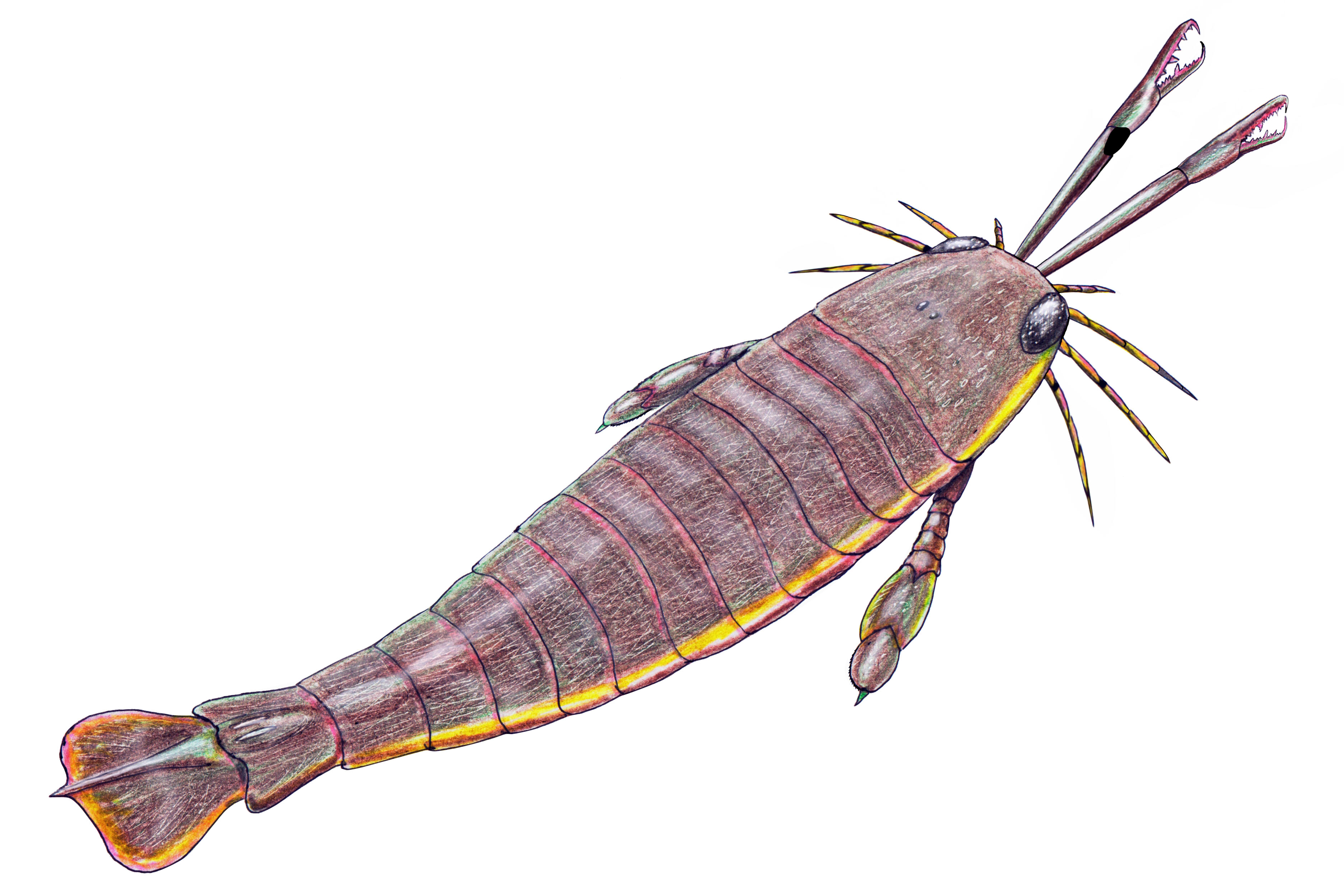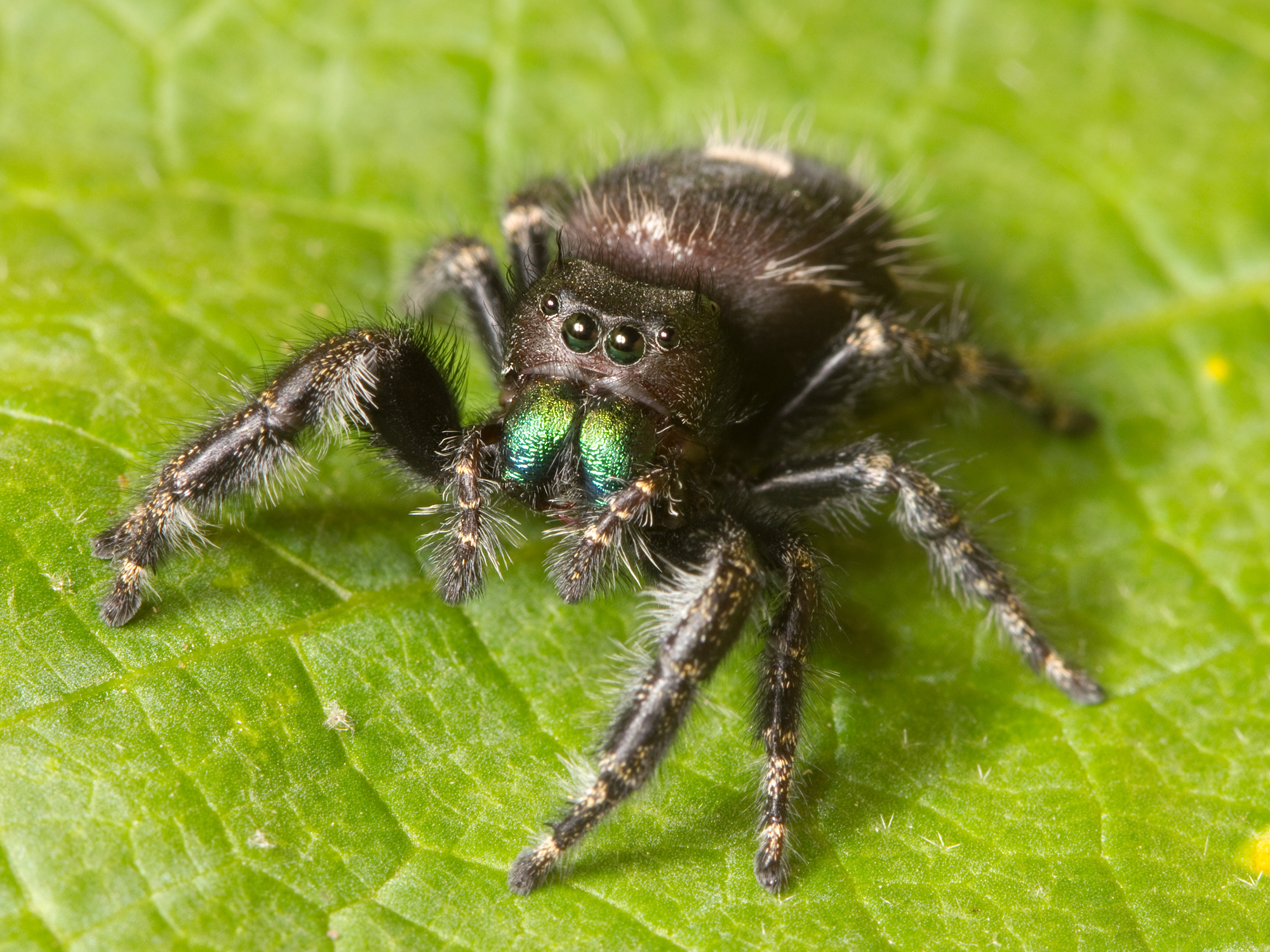|
Pterygotioid
Pterygotioidea (the name deriving from the type genus '' Pterygotus'', meaning "winged one") is a superfamily of eurypterids, an extinct group of aquatic arthropods. Pterygotioids were the most derived members of the infraorder Diploperculata and the sister group of the adelophthalmoid eurypterids. The group includes the basal and small hughmilleriids, the larger and specialized slimonids and the famous pterygotids which were equipped with robust and powerful cheliceral claws. Though the more primitive hughmilleriids were small, '' Hughmilleria wangi'' being the smallest of all pterygotioids at just in length, later members of the group, particularly in the Pterygotidae, would become the largest known arthropods to ever exist with several genera surpassing in length. Among all currently recognized eurypterid clades, the Pterygotioidea is the most diverse, containing over 50 species in 10 genera. With the number of recognized eurypterid species being around 250, ptery ... [...More Info...] [...Related Items...] OR: [Wikipedia] [Google] [Baidu] |
Hughmilleriidae
Hughmilleriidae (the name deriving from the type genus ''Hughmilleria'', which is named in honor of Scottish geologist Hugh Miller) is a family of eurypterids, an extinct group of aquatic arthropods. The hughmilleriids were the most basal members of the superfamily Pterygotioidea, in contrast with the more derived (more "advanced") families Pterygotidae and Slimonidae. Despite their classification as pterygotioids, the hughmilleriids possessed several characteristics shared with other eurypterid groups, such as the lanceolate telson (the most posterior segment of the body). Hughmilleriids are defined as pterygotioid eurypterids with swimming legs similar to those of the type genus, ''Hughmilleria'' (that is, 7th and 8th leg segments narrow and 9th segment very small), and whose second to fifth pair of appendages were spiniferous. Some further diagnostic characters unite the group, such as the slightly enlarged chelicerae (frontal appendages) and the streamlined shape of their bod ... [...More Info...] [...Related Items...] OR: [Wikipedia] [Google] [Baidu] |
Slimonidae
Slimonidae (the name deriving from the type genus ''Slimonia'', which is named in honor of Welsh fossil collector and surgeon Robert Slimon) is a family of eurypterids, an extinct group of aquatic arthropods. Slimonids were members of the superfamily Pterygotioidea and the family most closely related to the derived pterygotid eurypterids, which are famous for their cheliceral claws and great size. Many characteristics of the Slimonidae, such as their flattened and expanded telsons (the posteriormost division of their bodies), support a close relationship between the two groups. Slimonids are defined as pterygotioid eurypterids with swimming legs similar to those of the type genus, ''Slimonia'', and the second to fifth pair of appendages being non-spiniferous. The family contains only two genera, the almost completely known ''Slimonia'' and '' Salteropterus'', which is known only from the telson and the metastoma (a large plate part of the abdomen). Both slimonid genera preserve ... [...More Info...] [...Related Items...] OR: [Wikipedia] [Google] [Baidu] |
Adelophthalmoidea
Adelophthalmidae (the name deriving from the type genus ''Adelophthalmus'', meaning "no obvious eyes") is a family of eurypterids, an extinct group of aquatic arthropods. Adelophthalmidae is the only family classified as part of the superfamily Adelophthalmoidea, which in turn is classified within the infraorder Diploperculata in the suborder Eurypterina. Adelophthalmid eurypterids were small and swimming eurypterids that appeared in the Silurian period. With the earliest known members of the group, '' Nanahughmilleria prominens'' and '' Parahughmilleria maria'', being known from deposits of Early Silurian (possibly the Llandovery epoch) age and the last members, belonging to the long-lasting and widespread genus ''Adelophthalmus'', going extinct in the Early Permian, the Adelophthalmidae is the longest lasting single family of eurypterids. The survival of the group, and of swimming eurypterids (the suborder Eurypterina) beyond the Late Devonian is entirely due to the survival, ... [...More Info...] [...Related Items...] OR: [Wikipedia] [Google] [Baidu] |
Hughmilleria
''Hughmilleria'' is a genus of eurypterid, an extinct group of aquatic arthropods. Fossils of ''Hughmilleria'' have been discovered in deposits of the Silurian age in China and the United States. Classified as part of the basal family Hughmilleriidae, the genus contains three species, ''H. shawangunk'' from the eastern United States, ''H. socialis'' from Pittsford, New York, and ''H. wangi'' from Hunan, China. The genus is named in honor of the Scottish geologist Hugh Miller. ''H. socialis'' is the type species of Hughmilleriidae, a eurypterid family classified in the superfamily Pterygotioidea that is differentiated by their streamlined bodies, the enlargement of their medium-sized chelicerae and the presence of paired Spine (zoology), spines on the walking appendages. With the biggest specimen measuring 20 centimetres (8 inches) in length, ''Hughmilleria'' is considered a eurypterid of small size. Description ''Hughmilleria'' is the most basal (primitive) known member of the ... [...More Info...] [...Related Items...] OR: [Wikipedia] [Google] [Baidu] |
Pterygotidae
Pterygotidae (the name deriving from the type genus '' Pterygotus'', meaning "winged one") is a family of eurypterids, an extinct group of aquatic arthropods. They were members of the superfamily Pterygotioidea. Pterygotids were the largest known arthropods to have ever lived with some members of the family, such as '' Jaekelopterus'' and '' Acutiramus'', exceeding 2 metres (6.6 ft) in length. Their fossilized remains have been recovered in deposits ranging in age from 428 to 372 million years old ( Late Silurian to Late Devonian). One of the most successful groups of eurypterids, the pterygotids were the only eurypterid family to achieve a truly worldwide distribution. Several evolutionary innovations made the pterygotids unique among the eurypterids, with large and flattened telsons (the posteriormost division of the body) likely used as rudders to provide additional agility and enlarged chelicerae (frontal appendages) with claws. These claws were robust and possessed ... [...More Info...] [...Related Items...] OR: [Wikipedia] [Google] [Baidu] |
Pterygotus
''Pterygotus'' is a genus of giant predatory eurypterid, a group of extinct aquatic arthropods. Fossils of ''Pterygotus'' have been discovered in deposits ranging in age from Middle Silurian to Late Devonian, and have been referred to several different species. Fossils have been recovered from four continents; Australia, Europe, North America and South America, which indicates that ''Pterygotus'' might have had a nearly cosmopolitan (worldwide) distribution. The type species, ''P. anglicus'', was described by Swiss naturalist Louis Agassiz in 1839, who gave it the name ''Pterygotus'', meaning "winged one". Agassiz mistakenly believed the remains were of a giant fish; he would only realize the mistake five years later in 1844. ''Pterygotus'' was among the largest eurypterids. Isolated fossil remains of a large chelicera (frontal appendage) suggests that the largest known species, ''P. grandidentatus'', reached a body length of . Several other species, notably ''P. impacatus'' at ... [...More Info...] [...Related Items...] OR: [Wikipedia] [Google] [Baidu] |
Sister Taxon
In phylogenetics, a sister group or sister taxon, also called an adelphotaxon, comprises the closest relative(s) of another given unit in an evolutionary tree. Definition The expression is most easily illustrated by a cladogram: Taxon A and taxon B are sister groups to each other. Taxa A and B, together with any other extant or extinct descendants of their most recent common ancestor (MRCA), form a monophyletic group, the clade AB. Clade AB and taxon C are also sister groups. Taxa A, B, and C, together with all other descendants of their MRCA form the clade ABC. The whole clade ABC is itself a subtree of a larger tree which offers yet more sister group relationships, both among the leaves and among larger, more deeply rooted clades. The tree structure shown connects through its root to the rest of the universal tree of life. In cladistic standards, taxa A, B, and C may represent specimens, species, genera, or any other taxonomic units. If A and B are at the same t ... [...More Info...] [...Related Items...] OR: [Wikipedia] [Google] [Baidu] |
Basal (phylogenetics)
In phylogenetics, basal is the direction of the ''base'' (or root) of a rooted phylogenetic tree or cladogram. The term may be more strictly applied only to nodes adjacent to the root, or more loosely applied to nodes regarded as being close to the root. Note that extant taxa that lie on branches connecting directly to the root are not more closely related to the root than any other extant taxa. While there must always be two or more equally "basal" clades sprouting from the root of every cladogram, those clades may differ widely in taxonomic rank, species diversity, or both. If ''C'' is a basal clade within ''D'' that has the lowest rank of all basal clades within ''D'', ''C'' may be described as ''the'' basal taxon of that rank within ''D''. The concept of a 'key innovation' implies some degree of correlation between evolutionary innovation and diversification. However, such a correlation does not make a given case predicable, so ancestral characters should not be imputed ... [...More Info...] [...Related Items...] OR: [Wikipedia] [Google] [Baidu] |
Chelicerae
The chelicerae () are the mouthparts of the subphylum Chelicerata, an arthropod group that includes arachnids, horseshoe crabs, and sea spiders. Commonly referred to as " jaws", chelicerae may be shaped as either articulated fangs, or similarly to pincers. Some chelicerae, such as those found on nearly all spiders, are hollow and contain (or are connected to) venom glands, and are used to inject venom into prey or a perceived threat. In '' Pisaurina mira'', also known as the nursery web spider, the chelicerae are utilized to snatch the prey once it becomes within reach, facilitating the "sit-and-wait ambush predator" behavior. Both pseudoscorpions and harvestmen have structures on their chelicerae that are used for grooming (papillae in pseudoscorpions, cheliceral teeth in Opiliones). Types Chelicerae can be divided into three kinds: jackknife chelicerae, scissor chelicerae, and 3-segmented chelate chelicerae. Jackknife chelicerae The jackknife chelicera is subchelate ... [...More Info...] [...Related Items...] OR: [Wikipedia] [Google] [Baidu] |
John Mason Clarke
John Mason Clarke (April 15, 1857 – May 29, 1925) was an American teacher, geologist and paleontologist. __TOC__ Early career Born in Canandaigua, New York, the fifth of six children of Noah Turner Clarke and Laura Mason Merrill, he attended Canandaigua Academy where his father was teacher and principal. In 1873 he matriculated to Amherst College, where he graduated with a bachelor's degree in 1877. He returned to Canandaigua Academy and served as an instructor in various subjects. In 1879–1880 he worked as an assistant to Benjamin K. Emerson at Amherst, then he taught at the Utica Free Academy during 1880–1881. This was followed by work as an instructor at Smith College from 1881–1882, where he was made professor. During his second year at Smith, his first three scientific papers were published, concerning arthropods. It was at this point that he traveled to Göttingen University in 1883, where he hoped to study for a doctorate. However, an accusation of heterodox ... [...More Info...] [...Related Items...] OR: [Wikipedia] [Google] [Baidu] |
Infraorder
Order ( la, ordo) is one of the eight major hierarchical taxonomic ranks in Linnaean taxonomy. It is classified between family and class. In biological classification, the order is a taxonomic rank used in the classification of organisms and recognized by the nomenclature codes. An immediately higher rank, superorder, is sometimes added directly above order, with suborder directly beneath order. An order can also be defined as a group of related families. What does and does not belong to each order is determined by a taxonomist, as is whether a particular order should be recognized at all. Often there is no exact agreement, with different taxonomists each taking a different position. There are no hard rules that a taxonomist needs to follow in describing or recognizing an order. Some taxa are accepted almost universally, while others are recognized only rarely. The name of an order is usually written with a capital letter. For some groups of organisms, their orders may follow ... [...More Info...] [...Related Items...] OR: [Wikipedia] [Google] [Baidu] |






.png)


